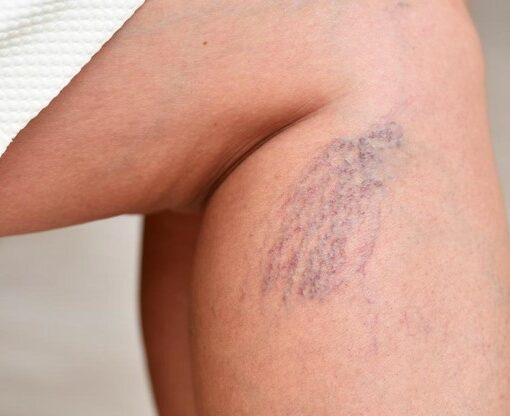
Spider veins appear as networks of blue, red, or purple lines on your skin, usually on your legs or your face. Although spider veins are not dangerous, they can affect your appearance, and impact your confidence. You may want to have your spider veins removed to restore the normal appearance of your skin.
At Tinsley Surgical, we are experts in vein care. Our office in Wilmington, North Carolina is led by top vascular surgeon Dr. Ellis A. Tinsley. Along with his experienced and compassionate staff, Dr. Tinsley offers diagnostic services and treatment options for many different types of vascular conditions.
What are spider veins?
Your heart constantly pumps blood throughout your body, bringing food to all your cells, and removing any waste products. It uses a network of tubes to do this. The tubes that carry the blood away from your heart are called arteries, and the tubes that carry it back to your heart are called veins.
There are small valves in your veins that allow the blood to flow back toward your heart, but stop it from traveling the other direction. These valves sometimes fail and allow blood to travel backward, causing the vein to swell with blood until you can see it through your skin. They are known as spider veins because they tend to form in a pattern that looks like the shape of a spider.
Spider veins are a very common vein problem, for women more so than for men. There are typically over 3 million cases in the United States each year. Spider veins don’t usually cause any discomfort, other than concerns about how they look, and a number of factors can contribute to their development.
What’s causing your spider veins?
Spider veins are caused by the valves in your veins not functioning normally, which is a type of vascular (vein) disease. There are a number of risk factors that can cause you to develop spider veins.
Hormones
Many women develop spider veins during pregnancy and menopause due to fluctuating hormone levels. Estrogen and progesterone dilate the veins, and can also weaken the walls of the veins, increasing the chances of blood flowing backward. Taking hormone replacement therapy or birth control pills can have similar effects.
Genetics
The genes you inherited from your parents can also be a factor in your developing spider veins because they can affect the structure and functioning of your veins. If you have a history of spider veins in your family, you are much more likely to develop them.
Activity
If you have a job that involves a lot of standing, you are at increased risk of developing spider veins, because the veins have to work harder to push the blood back up to your heart. If you have an especially sedentary lifestyle, and/or you are overweight, you are also more likely to develop spider veins.
Age
Increased age is also a risk factor for developing spider veins. Over time, the valves in your veins can wear out, and not function as well as they previously did. They then start allowing blood to flow backward, away from your heart.
Treatment for spider veins
Spider veins are typically treated with sclerotherapy, a procedure in which Dr. Tinsley injects a chemical into your spider veins to shrink them and close them off, forcing your blood to travel a different way. After a period of about 4 to 6 weeks, the veins completely disappear. We use a highly effective injectable foam to complete the procedure, which functions much better than the liquid chemical that is typically used.
Spider veins are not dangerous, but they can affect the look of your skin, and you may want to have them removed for cosmetic reasons. A number of conditions can cause spider veins, including hormonal fluctuations, age, and genetics. Spider veins are easy to remove with sclerotherapy, a treatment we offer at Tinsley Surgical.
To learn more about treatment for spider veins, or other vein issues, call our office to set up an appointment.
